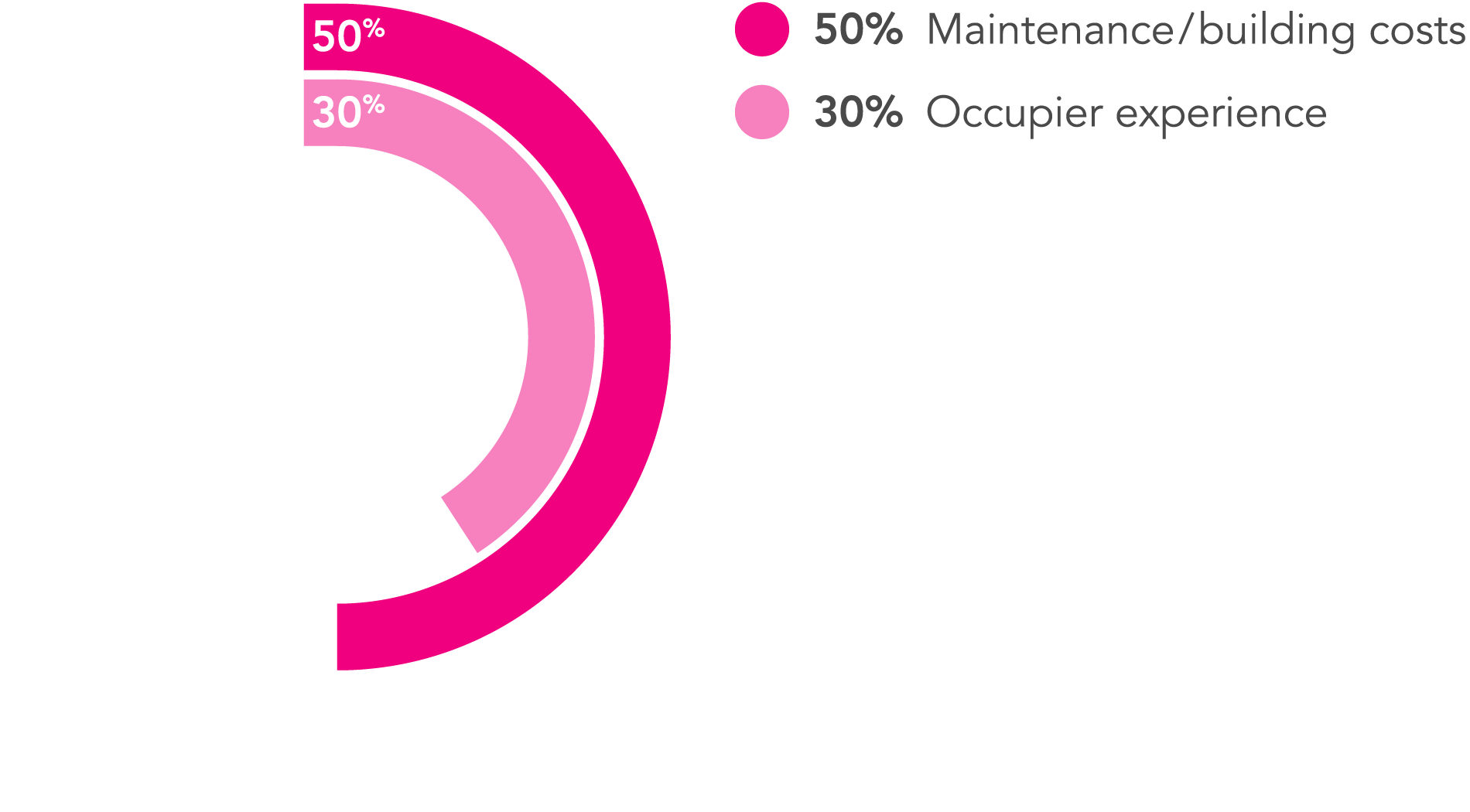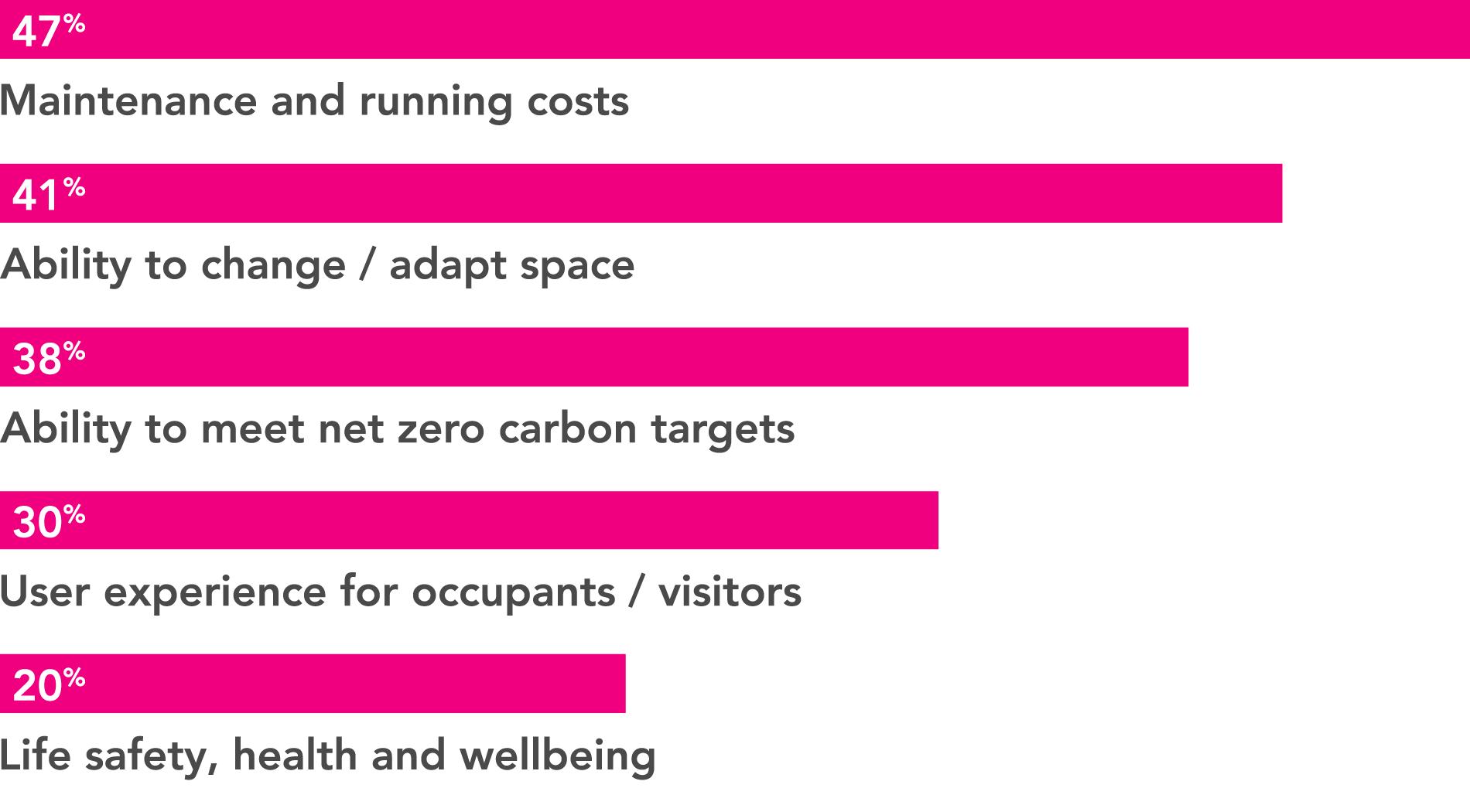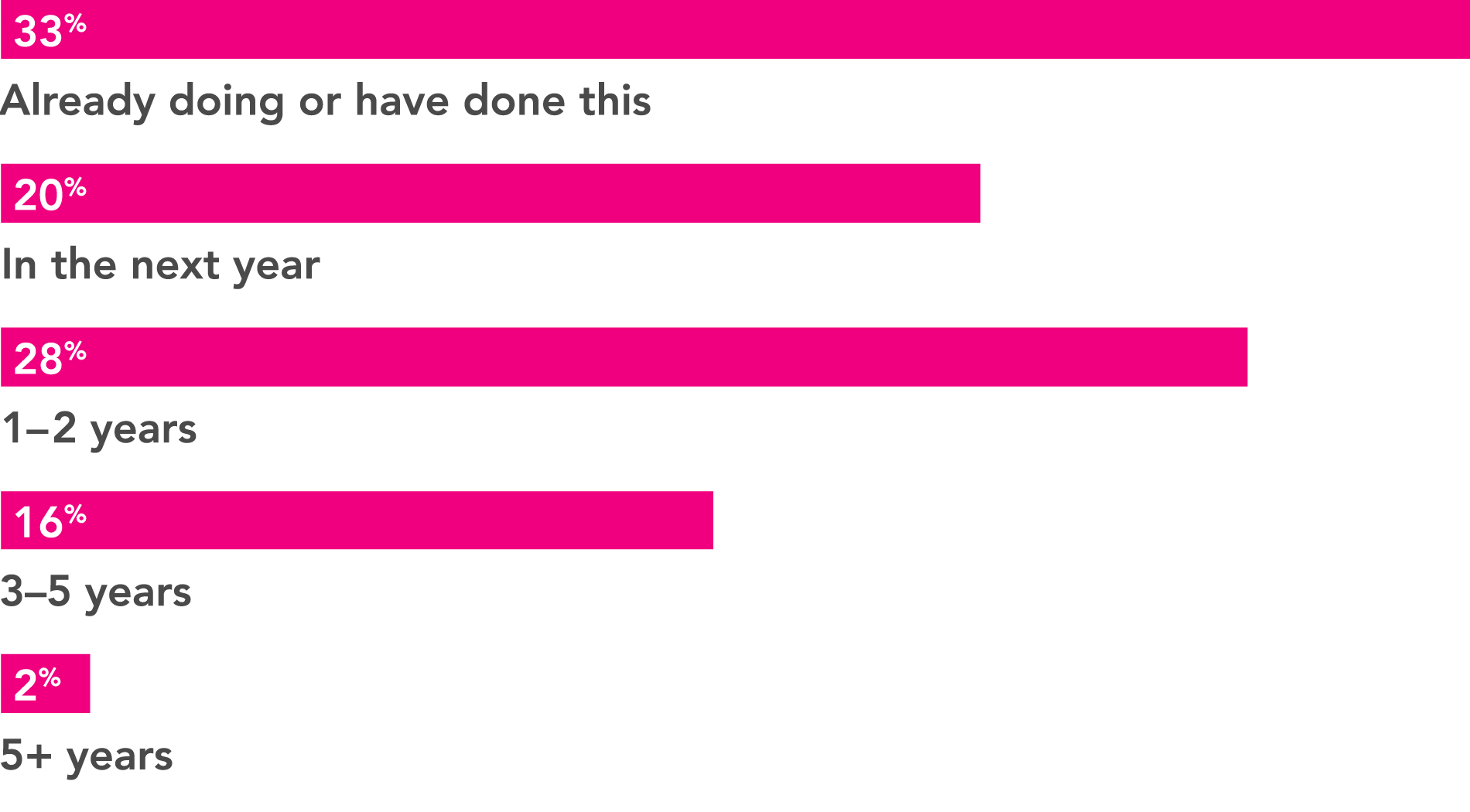Measurement
Assess all areas
What’s measured can be managed and improved. Accordingly, our respondents measure building performance to define their return on investment and to mitigate risks of fabric or systems failure. However, their efforts don’t always focus on one of the most important predictors of commercial value: the user experience. We believe that the whole building lifecycle can be better tracked against the end-user, and made more valuable and resilient as a result.
A cycle of measurement with people at the heart
In a connected age we are all used to reporting, reviewing and measuring our experiences, online and offline. The same mindset applies to our work, our leisure and the places those experiences occur. If buildings, and those which either own or occupy them, are not fully oriented towards the building users’ experience, they won’t act sufficiently to improve it. In a market of shorter and more flexible leases, it’s never been easier for customers to vote with their feet, and to find an alternative which meets their needs.
When it comes to measuring the performance of buildings, 50% of our respondents cite maintenance and building costs, 41% cite resilience of materials or services, while only 30% look to the occupier experience. Managing costs and physical resilience are both critical, but a lack of focus on the occupier experience represents a long-term commercial risk and should be considered alongside those two metrics.
We propose a combination of qualitative and quantitative data, gathered in a programme that sits across a building’s life. From handover of a new building, post-occupancy evaluations are important to help landlords and owners track how happy people are in their space, and to identify issues with building design or management before they become problems.
Installing and monitoring sensors in a building enables data collection for mechanical and electrical (M&E) systems maintenance, operation and indoor environment quality. This is something that is already available on the market but tends to be underused by investors and owners.
For existing buildings, the cycle begins and ends with technical due diligence reporting which accounts for these measures. Starting at acquisition, buyers can understand the quality of their asset from data gathered in-use, and disposals can be supported by metrics which demonstrate its readiness for leasing.
How we can help
More Redefining Building Performance
Find out more about the changing commercial building landscape, and how better building performance drives value and resilience.
Click through to explore the other themes in our report and read more insight on how TFT can help you meet the challenges ahead.
We’re here to help
For more information on how we can help your organisation improve building performance for more valuable and resilient assets, please get in touch with our expert team today.





